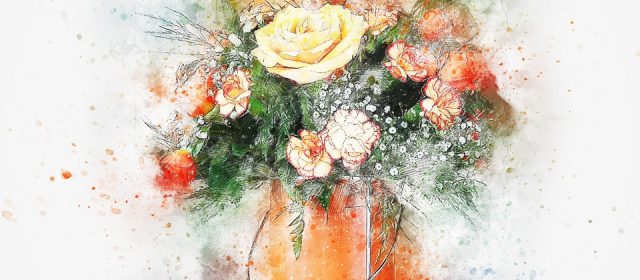Favorite Flowers of the Renaissance Art
- Marta Griffin | May 21, 2018

The Renaissance Period has produced some of the greatest art pieces of all time. Some of the most popular art themes of the Renaissance include religious paintings (The Creation of Adam by Michelangelo,) portraits (the Mona Lisa by Leonardo Da Vinci,) and classical mythology (Birth of Venus by Sandro Botticelli).
Mythical and religious characters and themes as well as man-made and natural inanimate objects are among the recurring subjects during this era.
But aside from these resonant themes, there are also exceptional paintings that have inanimate objects as their subjects. Flowers are undoubtedly among the most revisited and well-loved subjects of Renaissance artists. In many paintings, flowers are often incorporated into the overall portrait as minor detail. Italian Renaissance artists drew inspiration from floral or mille fleur tapestries which they used as backdrop for large mythological paintings. Religious paintings would use flowers for their rich symbolisms, especially in the Christian faith.
In some parts of Europe, Renaissance artists specialized in still-life paintings where flowers are common subject. These paintings typically featured floral arrangements that bring together in one vase an assortment of flowers that normally originate from different countries and even faraway continents.
The flower-inspired paintings vividly (almost realistically) depict how elaborate and elegant the floral arrangements were during this period. Using these paintings as guides, florists can bring to life splendid floral arrangements. You’d be surprised at how these experienced florists can masterfully recreate Renaissance floral arrangements that you can place as centrepiece to your home.
Looking at Renaissance Art, it seems that artists of this era have a seeming penchant to certain flowers. Some flowers you can expect to see in Renaissance art include the following:
- Roses
Probably the most beloved and recognized of all flowers, the rose is ever present in Renaissance art. Not just in still-life paintings but as well as in many large-scale paintings and portraits. Aside from its universal appeal and beauty, rose flower is also very rich in symbolisms. It symbolized love, honour, faith, passion, beauty, and many more. Some artists would even hide secret meanings with the use of flowers. In religious paintings, the roses were associated with the blood of Christ, the Virgin Mary, and certain saints.
- Pinks
Pinks or dianthus flowers are also common in Renaissance art. They stand out in paintings for their typical colour pink and unique five-petal formation. These flowers were a mainstay in Renaissance gardens. They thrived in rocky, gravely soil and are abundant during those period. The dianthus flower can be seen in many illuminated manuscripts. In Christianity, the pink has very deep significance as it is associated with the crowns and nails used in the crucifixion. This flower is considered the precursor of carnation.
- Lilies
Another favourite of Renaissance artists, lilies were very evident in paintings with religious theme as it is referenced to the Virgin Mary. It is also associated to the Holy Family, particularly the three buds on a single stem. Lilies were symbolic of chastity and purity. The artists typically depict lilies as tall, statuesque and white flower with no frills. Some paintings would have lily buds only or an iteration of it.
- Columbines
Columbines, with its intricate and elegant petals, are well loved during the Renaissance period. They can be seen in paintings of floral arrangements as well as in landscape paintings. This flower has numerous varieties with contrasting colours and multiple layers of petals. They often symbolized the sorrows of the Mary and also signified the Holy Spirit.
These four flowers are among the most pervading flower varieties that you would likely see in Renaissance art. These flowers also tend to remain popular even now and are used as decorations throughout the year. It could be because it is easy for the Florist to make bouquets with these flowers. The other flowers common in Renaissance art includes irises, heartsease, strawberry, and native wildflowers. Even these flowers can be seen in the floral decorations of today. Depending on the technique and style of the artist, flowers can have different representations. It’s also not uncommon to find flowers that were sourced from other continents.
Flowers have always been a mainstay in the world of art, as early as man first learned to draw images and concoct colours. Regardless of the era, artistic technique, and style, flowers will forever be a top pick as subject for artists because of their timeless allure!


twitter
pinterest
email
rss